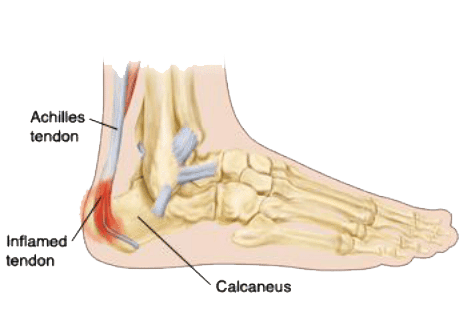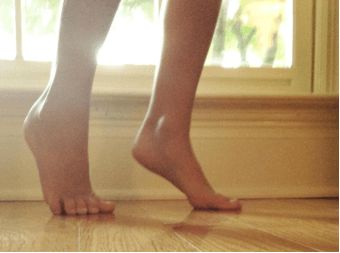Sever’s Disease is best described as pain in the heel affecting children from the age of 8-15 years old. Often children will complain of pain in one or both heels with running or walking, usually at the back of the heel or under.
Sever’s Disease

What is Sever’s disease?
What causes it?
Heel pain is common in children as their feet and legs are growing and the heel bone (calcaneus) will not fully develop until the age of 14 or older – typically after a growth spurt. During this time, new bone is growing at the growth plate, a weak area located at the back of the heel. Repetitive stress at the growth plate causes inflammation in the area as the growth plate is sensitive to repeated pounding on hard surfaces.

Symptoms
The main signs of Sever’s disease are:
- Pain and stiffness around the heel or Achilles tendon after a non-weight bearing period.
- Heel pain during physical exercise
- Pain increases after exercise.
- Soreness, tenderness and swelling on the heel. You might also feel a lump over the painful area.
- Limping after sport or in the morning
- Tendency to tip toe.
Diagnosis
A Doctor or Allied Health professional such as a physiotherapist will be able to diagnose Sever’s Disease by asking the child to describe the symptoms and conduct a physical examination. The child may feel a lot of pain when both sides of the heel are squeezed. This squeeze test is performed by the physician to check if the tendons located at the heel are tight.
Treatment
- Rest, Ice, Compression and Elevation (RICE). Reduce any activity that causes pain, ice the affected area and compress it while elevating the foot.
- Inflammation can be reduced by taking anti-inflammatory drugs. Speak to your GP regarding this
- Stretching the hamstrings, calf muscles and tendons located at the back of the leg will assist the recovery process.
- Orthotic insoles will help to support the foot and prevent over-pronation.
What can I do to speed up my recovery?
Your physiotherapist has prescribed exercises specifically for you and your path to recovery, practice them as prescribed.
If your pre-injury routine included high-impact exercises or sports, your physiotherapist would work with you to find suitable, alternative, low-impact aerobic activities, like cycling, swimming, or running in the pool.
How long till I get better?
If the child receives proper care, within two weeks or 2 months, the child will be better. Your child can play sports again and only when the heel pain is gone. It is also important to note that growing pains are reduced when the child grows older.
Prevention
Sever’s disease can be prevented if the parents help the child to maintain good flexibility when growing up. There are stretching exercises that are found in the link below showing how your child can lower the risk of injuries during the spurt growth.
Always visit your physician to provide you with more advice. Good quality shoes with shock-absorbent soles will help to reduce your chances of risk.
Take Home Message
- Ensure That You Train On Proper Grounds
- Ensure That Your Child Has Good Shoes For Sporting Activities
- Consult Your Doctor/Physiotherapist For Exercises That Can Help Prevent Sever’s Disease.
For all your Sever’s Disease needs, feel free to give us a call on 02 9793 8840 or Book Online

New Client Offer - 10% OFF
Are you in pain? Not sure if we can help you?
Book your initial appointment and receive 10% off any service!